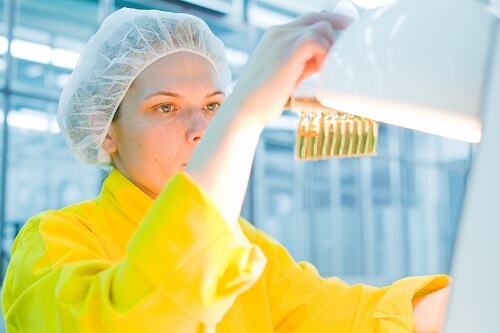Notícias
Standardize Antibiotic Susceptibility Testing
2018-06-08

Using Ultrapure Water in Antibiotic Susceptibility Testing
A new study makes recommendations for combining two different methods to test bacterial susceptibility to antibiotics, which could help improve reproducibility between laboratories and provide more clinically relevant information for treating infections. Every day, thousands of experimental and diagnostic laboratories around the world are carrying out antimicrobial susceptibility testing (AST) to search for an effective antibiotic to use against a bacterial strain. But results can vary widely between laboratories, and there is a need to create standardized protocols to improve reproducibility and reliability of results.
A killer concentration
Another measure is to define an antibiotic's minimal bactericidal concentration (MBC), which defines the lowest concentration that's needed to kill the bacteria. This is especially important for patients with inflammatory diseases or who are immunocompromised - as their immune system may not be working well enough to fully eliminate the pathogens should an antibiotic only inhibit its growth. Determining the MBC involves a test to work out the lowest concentration of an antibiotic that reduces the number of bacterial colonies on subculture by 99.9%. But this test attracts criticism, due to its poor reproducibility between laboratories. Involving broth dilution and re-growth of bacteria in antibiotic-free media, potential variables include the size of the inoculum, sample mixing and growth phase of the bacteria.
Combining MBC and MIC approaches
Assessing both the MBC and MIC may be a more useful strategy for determining the clinical relevance of an antibiotic. A new study, published in the Journal of Microbiological Methods, carried out an objective, detailed comparison of a range of different methodologies for determining the MIC and MBC (1). The researchers tested two bacterial strains, P.aeruginosa PA01 and E.coli ATCC 25922 against four antibiotics: gentamicin, tobramycin, ciprofloxacin, and colistin - as well as S.aureus, which they additionally tested with vancomycin. They used ultrapure water purified using PURELAB Flex apparatus from ELGA LabWater for the preparation and analysis of all samples. The team worked out the MIC using broth microdilution, a calorimetric method and a microscopy-based screening system (MBSS). For determining the MBC, they carried out flurophore staining, comparing this with the broth regrowth method.
New recommendations to assess antibiotics
After evaluating their results, the researchers recommend different combinations of methods to determine the MIC and MBC, depending on whether time, cost or sensitivity is the main priority. They also emphasize the importance of uniform protocols across different laboratories, including a suggested standardization of the timepoint for reading MIC results of 20 hours. This important new study proposes new recommendations for the best methods to assess which antibiotics are effective against a bacterial strain. These will help improve reproducibility across laboratories, gain more clinically relevant data, and enable a better understanding of the action of antibiotic drugs.
References
(1) Klodzinska et al. Combining diagnostic methods for antimicrobial susceptibility testing - a comparative approach. Journal of Microbiological Methods 144 (2018), p177-185.
Why choose ELGA LabWater?
We are the LabWater Specialists since 1937 we have been working with scientists to guarantee pure and ultrapure water for their experiments and lab work. Laboratories around the world trust our laboratory water purification systems to help their researchers to achieve accurate, reliable results.



























